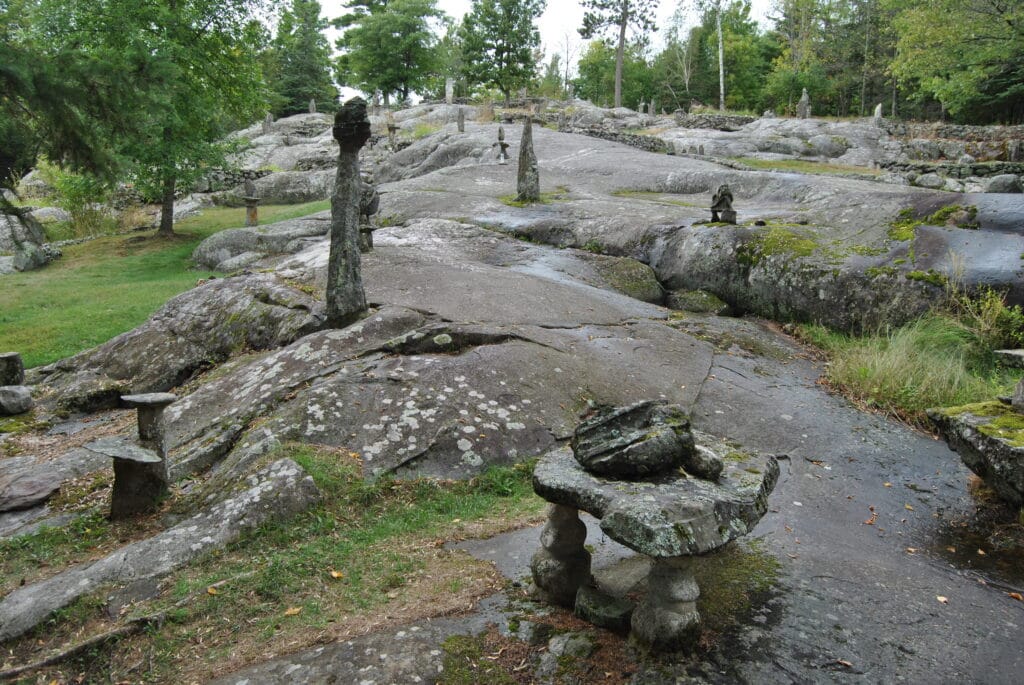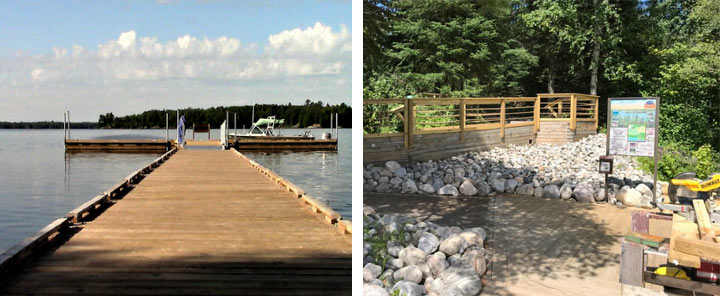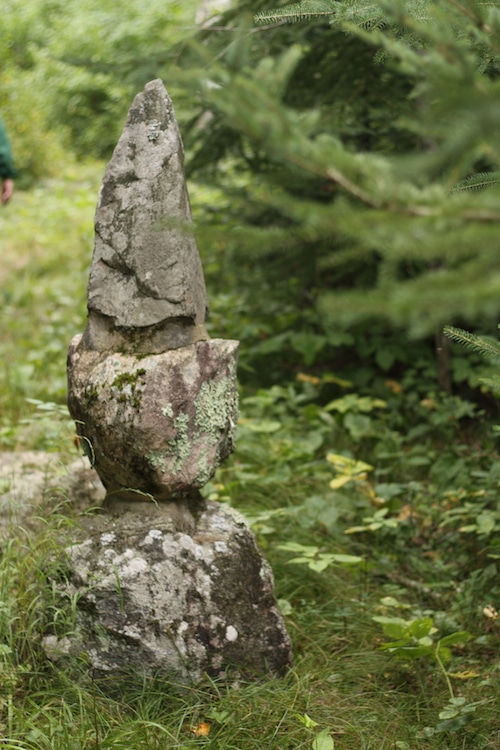After two years of work, the National Park Service has completed extensive repairs and improvements at the most popular day-trip destination in Voyageurs National Park. The project at the Ellsworth Rock Gardens increased accessibility, expanded dock space, and provided interpretive signs.

The rock gardens were constructed by Jack Ellsworth, a carpenter from Chicago, between about 1944 and 1965, when he visited his cabin in what is now the National Park.
Ellsworth ultimately built 62 terraced gardens rising above the lake on a bedrock outcrop. He filled the gardens with 13,000 lilies and other flowers, and built rock creations that were both beautiful and feats of engineering. Always just beyond the carefully crafted grounds hovers the thick boreal forest.
“Historically, the gardens had the appearance of being carved out of the forested wilderness,” the National Park Service says. “This boundary between the gardens and forest is one of the primary features of the site. The forest provides a distinct, impenetrable wall, creating a dark, dense backdrop for views within the gardens.”
Lost and found
Ellsworth’s gardens were an attraction that drew many visitors in its heyday, with 5,200 visitors in 1962 alone. But its creator began to suffer poor health around that same time, and did not return to the gardens after 1965, passing away nine years later. The National Park Service purchased the property when Voyageurs National Park was created in 1978.
Once known as “The Showcase of Kabetogama,” the gardens were nearly swallowed by the forest until 2000, when community volunteers and the National Park Service began restoring the site.
Few of the walls or sculptures could still be seen, but were brought back through a long process of removing vegetation and repairing the structures. The site once again became a popular destination for visitors. In 2018, the Park Service began work on a series of upgrades to the site. There is now a new, longer dock, a lift and trails that are accessible to all visitors.

Public-private park partnership
In addition to funding from the federal government, the park’s official Friends group, Voyageurs National Park Association (VNPA), contributed money and other assistance. VNPA’s support included paying for a series of six interpretive waysides to tell the story of the site. Volunteer trips organized by the group have also helped maintain the site.
“Great work was done there from 1944 to 1966 by Jack Ellsworth. Great work was done there last weekend by our park staff and volunteers. Great work is done there every week by wonderful long-term gardeners who have volunteered their time for the past eleven years. It truly is a beautiful and enchanting place,” wrote Ella Rausch of Voyageurs National Park Association in 2016.
National Park Service staff, contractors, and volunteers have repaired the sculptures, rock walls, and remaining buildings, removed non-historic vegetation, and replanted the flower beds with historically-accurate types of flowers.


More to find

The story of the site may still not be fully told, nor its full extent. Recent aerial surveys using high-tech radar have shown the possibility that more historic works remain obscured by the forest.
The Park Service was conducting flights to measure lake levels, hoping to learn more about climate change, but also got the rock garden site with the detailed measurements of the site’s topography.
“Park staff have used this data to reconstruct in 2D and 3D some of the walls and sculptures of the garden (see above illustration),” VNPA shared in 2014. “This detailed, birds-eye view now requires fieldwork to distinguish bedrock from intentional structures. Already though, there are suggestions of more features outside the known boundaries of the site that could change our understanding of the garden’s layout.”
The gardens are eligible for the National Register of Historic Places, but has not been listed yet. It is seen as significant for both the unique style and large scale of Ellsworth’s work, and the site’s popularity with the public since the 1940s.
More information:
- Ellsworth Rock Gardens: Showplace of Lake Kabetogama – National Park Service
- Jack Ellsworth’s Vision, by Catherine Crawford, National Park Service – Voyageurs National Park Association
- Mapping the Mystery of Jack Ellsworth – Voyageurs National Park Association
- Paths through History: Accessible Trails at Voyageurs National Park – NPS, National Center for Preservation Technology and Training

